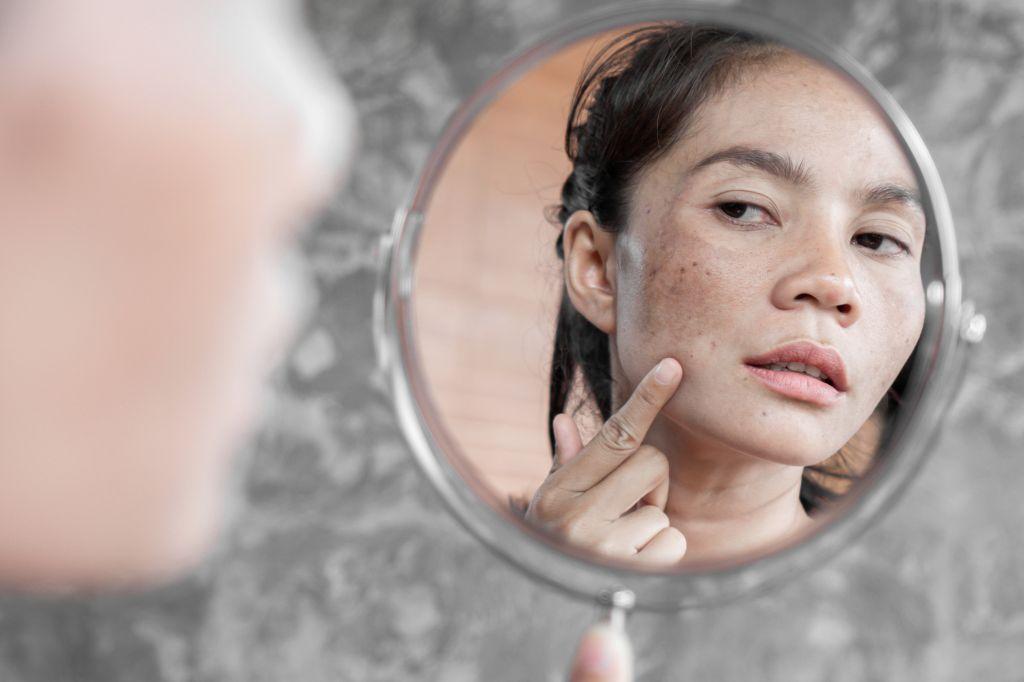How to Fix Sun Damaged Skin
Sun-damaged skin is a common concern, especially in sunny regions where prolonged exposure to UV rays can cause premature aging, dark spots, and other skin issues. However, if you have sun-damaged skin, don’t worry. You can take steps to help repair the damage and restore your skin’s healthy and vibrant appearance.

Signs of Sun-damaged Skin
Imagine stepping outside and feeling the warmth of the sun on your face. While it may be invigorating, behind that comforting glow are the sun’s ultraviolet (UV) rays. These rays silently penetrate your skin, causing damage at the cellular level.
This may lead to several skin issues, from the early onset of wrinkles and fine lines to dark spots and, in severe cases, skin cancer. Without adequate protection, the effects of sun exposure can result in significant damage that demands professional treatment. Signs of sun-damaged skin include:
- Wrinkles and fine lines: Over time, UV rays break down the collagen and elastin fibers in your skin, leading to wrinkles and fine lines.
- Dark spots: Prolonged exposure to the sun can cause an overproduction of melanin, resulting in dark spots or hyperpigmentation on your skin.
- Uneven texture: Sun damage may also lead to uneven texture, making your skin rough and bumpy.
- Redness and irritation: If you have fair or sensitive skin, prolonged exposure to the sun can cause redness, irritation, or even a rash.
- Sunburn: The most obvious sign of sun damage is a sunburn, which may range from mild redness to painful blisters.
- Loss of elasticity: Sun-damaged skin may lose its firmness and elasticity, leading to sagging.
Tips to Avoid Further Sun Damage
Preventing sun damage is as crucial as treating it. To shield your skin from further harm, incorporate daily sun protection into your routine. Apply broad-spectrum sunscreen with at least SPF 30 every day, regardless of the weather, and reapply it every two hours when outdoors. Additionally, wear protective clothing such as hats, sunglasses, and long-sleeved shirts, and seek shade whenever possible, especially during peak sun hours between 10 AM and 4 PM.
Maintaining a healthy skincare routine is also vital. Use a gentle cleanser to avoid stripping your skin of its natural oils, and keep your skin hydrated by drinking plenty of water and using moisturizing skincare products. Regular check-ups with a dermatologist can help monitor and address any signs of sun damage early, ensuring your skin remains healthy and protected.
How to Treat Sun-damaged Skin
Several effective treatments are available to help repair sun-damaged skin, ranging from topical treatments to advanced dermatological procedures. At Academic Alliance in Dermatology, we offer various treatment options tailored to your specific skin concerns and needs. If you are struggling with sun-damaged skin, consider the following treatment options.
Topical Treatments
Topical treatments are crucial for repairing sun-damaged skin. Retinoids, derived from vitamin A, improve skin texture, reduce wrinkles, and lighten pigmentation by promoting collagen production and increasing skin cell turnover. Antioxidant serums with vitamins C and E neutralize free radicals from UV exposure, reduce inflammation, and brighten the skin, enhancing its overall tone.
Moisturizers help restore hydration and repair the skin barrier. Ingredients like hyaluronic acid draw moisture into the skin, making it smoother and plumper. Regularly using these treatments can significantly improve the skin’s health and appearance, effectively reversing the effects of sun damage.
Professional Treatments
Professional treatments offer powerful solutions for sun-damaged skin. Chemical peels exfoliate the top layers, promoting new cell growth and improving texture and tone, particularly for hyperpigmentation and fine lines. Laser therapy targets deeper layers to stimulate collagen production and address issues like pigmentation and wrinkles.
Microneedling creates tiny skin punctures to boost collagen and elastin production, improving texture and reducing scars and wrinkles. These treatments effectively reverse sun damage and rejuvenate the skin. Academic Alliance in Dermatology offers multiple advanced treatments customized to address specific skin concerns.
Reveal Healthy, Glowing Skin at Academic Alliance in Dermatology
Don’t let sun damage prevent you from having radiant, youthful skin. At Academic Alliance in Dermatology, our team of experts is dedicated to helping you achieve your best skin yet. With our comprehensive range of treatments and personalized care, we can effectively address and reverse the signs of sun damage. Your skin’s health is our priority. Contact Academic Alliance in Dermatology and take the first step toward rejuvenating your skin today.
